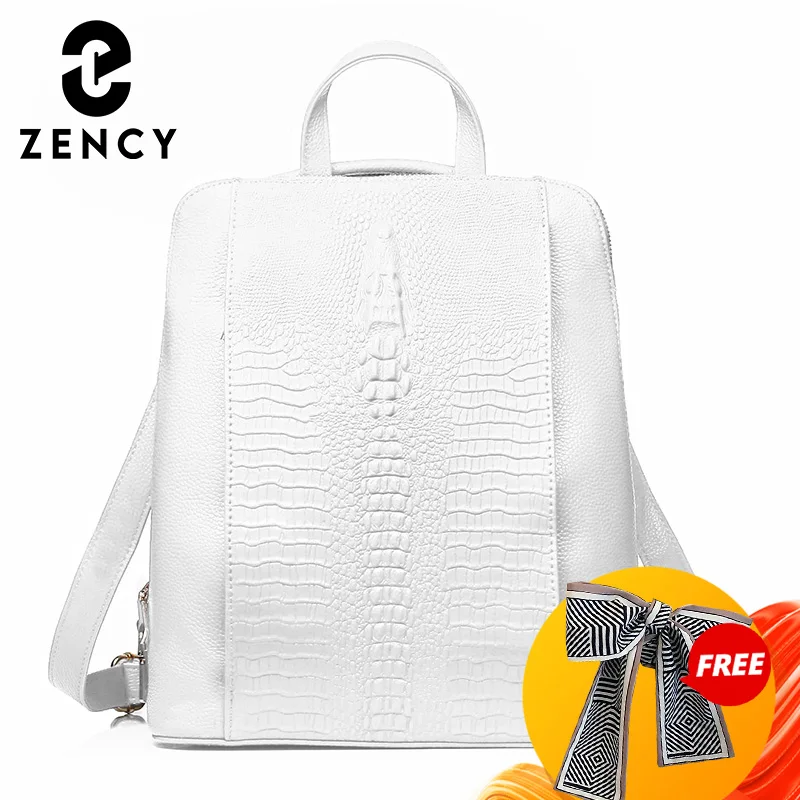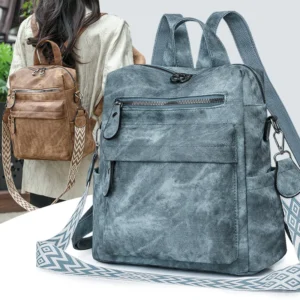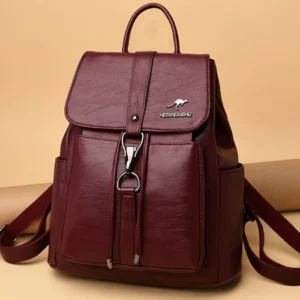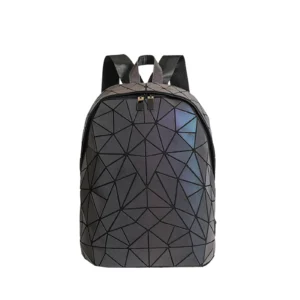1. Introduction: Understanding Ethical Sourcing in Leather Backpacks
In today’s conscious consumer market, “ethically sourced” has become more than just a buzzword—it represents a meaningful commitment to environmental sustainability, social responsibility, and animal welfare. When applied to leather backpacks, ethical sourcing encompasses everything from how materials are obtained and processed to the working conditions of the people who craft these products.
The demand for ethically produced goods continues to grow, with studies showing that over 70% of consumers now consider sustainability factors when making purchasing decisions. This shift reflects our collective awareness of how our buying choices impact the world around us. For leather backpacks specifically, ethical considerations take on special significance because of the intersection of animal welfare, environmental impact, and craftsmanship.
One often overlooked aspect of ethical sourcing is longevity—products made to last reduce overall consumption and waste. Quality materials that age beautifully and can be maintained through proper leather conditioning and waterproofing represent a more sustainable approach than disposable alternatives.
In this guide, we’ll explore both traditional ethical leather practices and innovative alternative materials, helping you understand what truly makes a backpack ethically sourced—from material origin to manufacturing process and beyond.
2. Traditional Leather: Ethical Sourcing and Responsible Production
Ethically sourced traditional leather begins with its origin—genuine ethical leather is a by-product of the meat industry rather than animals raised primarily for their hides. This approach honors the animal by ensuring no part goes to waste and no animals are raised solely for fashion.
Transparency in the supply chain is fundamental to ethical leather sourcing. Knowing where hides originate, how animals were treated, and tracking the material through each production stage allows brands and consumers to make informed choices. This traceability is increasingly becoming an industry standard as consumers demand greater accountability.
Tanning methods represent a critical component of ethical leather production. Traditional chrome tanning, while efficient, can create significant environmental concerns due to chemical runoff. More sustainable approaches include:
- Vegetable tanning: Using natural tannins from tree bark and plant matter
- Chrome-free tanning: Alternative methods that avoid harmful chromium compounds
- Low-impact tanning: Processes that minimize water usage and chemical waste
The environmental impact of leather processing extends beyond tanning to include water consumption, energy usage, and waste management. Ethical producers implement water recycling systems, energy-efficient equipment, and comprehensive waste treatment protocols.
Several key certifications help identify responsibly produced leather:
- Leather Working Group (LWG): Rates tanneries on environmental performance (Gold, Silver, Bronze)
- ISO 14001: Environmental management standards
- Organic Leather Certification: Verifies hides come from organically raised animals
Recycled and upcycled leather represents another facet of ethical leather production. These materials utilize scraps and offcuts from primary production, extending the lifespan of existing leather and reducing waste. The ultimate guide to conditioning leather backpacks provides valuable information about maintaining these materials for maximum longevity.
When considering ethical leather options, full grain leather backpacks often represent the most sustainable choice. Their durability means they can last decades with proper care, creating less environmental impact over time compared to products that require frequent replacement.
3. Plant-Based Leather Alternatives: Innovation in Sustainable Materials
The plant-based leather revolution has introduced remarkable alternatives to traditional animal leather, offering ethical options with unique aesthetic and performance characteristics. These innovative materials address environmental and animal welfare concerns while providing distinctive textures and properties.
Piñatex: Developed from pineapple leaf fibers, this material utilizes agricultural waste that would otherwise be burned. The resulting fabric features a naturally textured surface similar to coarse leather. Piñatex requires minimal additional resources to produce and creates additional income for farming communities.
Mylo: This groundbreaking material is grown from mushroom mycelium (root structure) on beds of organic material. The controlled growing process creates a consistently textured material that can be finished to mimic various leather grains. Mylo requires significantly less water and land than animal leather, with production generating minimal waste.
AppleSkin: Created from apple industry waste—cores and peels—this innovative material combines apple fiber with polyurethane. The apple content (typically 20-50%) reduces petroleum dependence while repurposing food waste. The resulting material offers flexibility and durability suitable for backpack applications.
Desserto: Made from nopal cactus leaves, this material offers excellent breathability and durability. The cactus plants require minimal water and absorb CO2, while harvesting leaves doesn’t kill the plant, creating a renewable material source. Desserto’s texture and performance make it particularly suitable for high-end applications.
Cork Leather: Harvested from the bark of cork oak trees without harming them, cork leather offers natural water resistance and unique visual texture. The harvesting process actually helps trees absorb more CO2, making it environmentally beneficial. Cork is lightweight yet durable, ideal for backpack exteriors that won’t feel heavy when carried.
Mirum: This plastic-free plant composite combines natural rubber, plant oils, and agricultural waste into a versatile material. Unlike many alternatives, Mirum contains no plastic components, making it completely biodegradable at end-of-life while maintaining performance characteristics similar to traditional leather.
Understanding how oiling affects leather waterproofing provides valuable context when comparing traditional leather maintenance with the care requirements of these innovative alternatives. While traditional leather requires specific conditioning routines, many plant-based alternatives need different care approaches to maintain their appearance and performance.
4. Recycled and Bio-based Synthetics: Balancing Ethics and Performance
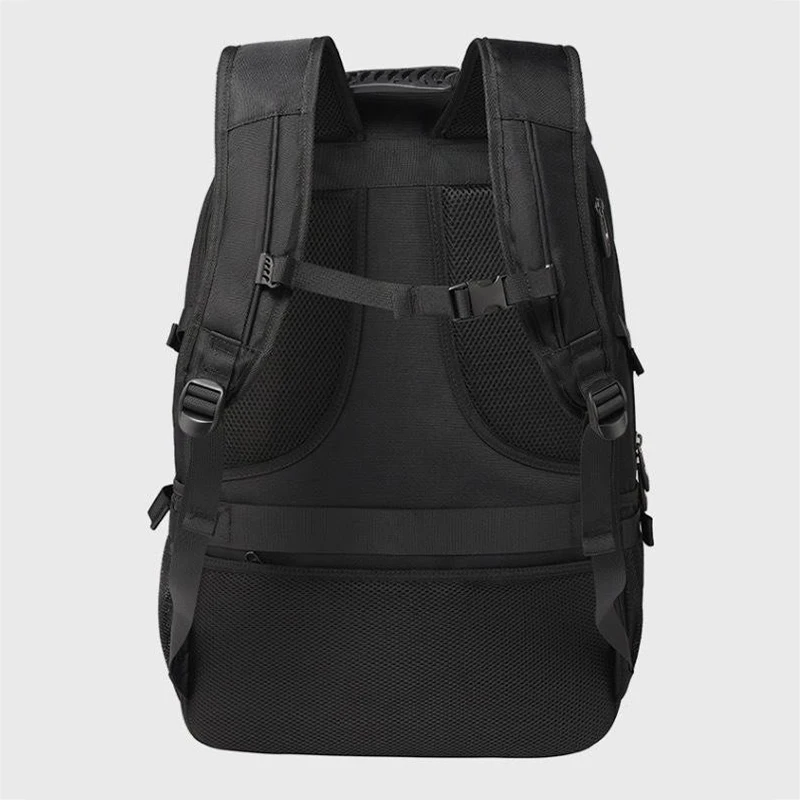
Recycled synthetic materials offer an important bridge between traditional materials and fully plant-based alternatives. These materials repurpose existing resources, diverting waste from landfills and oceans while reducing demand for virgin petroleum products.
Recycled polyester (rPET) transforms plastic bottles into functional textile fibers. This process consumes approximately 30-50% less energy than virgin polyester production and reduces associated carbon emissions. The resulting material performs identically to conventional polyester but carries a significantly smaller environmental footprint.
ECONYL® represents another breakthrough in recycled synthetics. Created from reclaimed fishing nets, fabric scraps, and industrial plastic, this regenerated nylon helps address ocean pollution while providing a high-performance material. The closed-loop regeneration process allows ECONYL® to be recycled repeatedly without quality degradation.
Recent advancements in polyurethane (PU) technology have led to water-based and partially bio-based formulations that significantly reduce toxicity concerns. These improved versions eliminate harmful solvents while incorporating plant-derived components, offering better environmental profiles than conventional PU.
| Material Type | Durability | Water Resistance | Environmental Impact | Feel/Texture |
|---|---|---|---|---|
| Traditional PU | High | Excellent | High (petroleum-based) | Smooth, flexible |
| Water-based PU | Medium-High | Very Good | Medium | Slightly softer |
| Bio-based PU | Medium-High | Very Good | Medium-Low | Natural variation |
| Recycled Polyester | High | Good | Low | Canvas-like |
| ECONYL® Nylon | Very High | Excellent | Very Low | Smooth, strong |
When evaluating recycled synthetic options, look for these important certifications:
- Global Recycled Standard (GRS): Verifies recycled content and responsible production
- OEKO-TEX Standard 100: Ensures materials are free from harmful substances
- Bluesign®: Certifies environmentally safe production throughout the supply chain
For backpack shoppers seeking practical options that balance sustainability with performance, many leather travel backpacks now incorporate these innovative materials alongside traditional leather, offering the best of both worlds.
5. Supporting Materials: Ethical Components Beyond the Main Fabric
Creating a truly ethical backpack requires attention to every component, not just the outer material. These supporting elements—from linings to hardware—can significantly impact a product’s overall sustainability profile.
Sustainable Lining Options:
– Organic cotton: Grown without synthetic pesticides or fertilizers, certified by GOTS (Global Organic Textile Standard)
– Hemp: Requires minimal water and no pesticides, naturally antimicrobial and durable
– Recycled polyester: Transforms plastic waste into functional fabric with reduced environmental impact
– Tencel/Lyocell: Created from sustainably harvested wood pulp in a closed-loop process that recycles water and solvents
Ethical Hardware Considerations:
– Recycled metals: Brass, aluminum, and stainless steel from reclaimed sources
– Plastic-free alternatives: Natural materials like wood, bone, or corozo nut
– Durable design: Components engineered for thousands of uses without failure
– Replaceable parts: Hardware that can be repaired rather than discarding the entire product
Water-resistant treatments represent another important ethical consideration. Traditional DWR (Durable Water Repellent) coatings often contained PFCs (perfluorinated chemicals) with significant environmental concerns. Newer alternatives include:
– PFC-free water repellents derived from natural waxes
– Silicon-based water-resistant treatments
– Plant-based impregnation methods
Padding and structural elements also offer opportunities for sustainable innovation. Recycled foam, organic cotton batting, and even mushroom-based packaging materials provide alternatives to conventional petroleum-based foams.
Many vintage leather backpacks exemplify this holistic approach to materials selection, with natural fibers, quality hardware, and traditional construction methods that emphasize longevity over trendiness—a philosophy that inherently supports sustainability.
6. Manufacturing Ethics: The Human Element of Production
Ethical sourcing extends beyond materials to include the people who transform those materials into finished products. Fair labor practices form the cornerstone of truly ethical manufacturing, ensuring that workers receive appropriate compensation and work in safe environments.
Fair wage standards vary by country but should always provide workers with compensation that meets their basic needs while allowing for discretionary income. This “living wage” approach contrasts with the minimum legal requirements that often fall short of actual living costs in many regions.
Safe working conditions encompass proper ventilation, appropriate safety equipment, reasonable working hours, and facilities free from hazardous materials. These standards protect workers’ immediate health and long-term wellbeing—particularly important in industries where chemical processes or heavy machinery are involved.
Several certifications help identify products made under ethical working conditions:
- Fair Wear Foundation: Verifies fair labor practices throughout supply chains
- SA8000: Comprehensive standard addressing child labor, forced labor, health and safety, and more
- B Corporation: Holistic certification examining company-wide social and environmental performance
Transparency in production facilities has become increasingly important as consumers seek to understand who makes their products. Brands demonstrating commitment to manufacturing ethics typically share details about their production partners, facility locations, and working conditions—sometimes including factory tours or worker interviews.
The community impact of production facilities represents another ethical dimension. Manufacturing centers that contribute positively to their local communities through fair employment, skills training, and economic stability create ripple effects beyond individual workers.
Applying complete waterproofing techniques for leather bags and other finishing processes in ethical manufacturing requires balancing traditional craftsmanship with worker safety—ensuring artisans have proper ventilation and protection when working with any treatments or finishes.
7. Environmental Impact: From Resource to Backpack
The environmental footprint of backpack production extends across the entire lifecycle—from raw material acquisition to manufacturing processes and eventual disposal. Understanding these impacts helps manufacturers and consumers make more sustainable choices.
Energy consumption varies dramatically between production methods. Traditional handcrafting typically requires minimal energy, while automated production demands significant electricity. Ethical manufacturers increasingly power facilities with renewable energy sources, including solar, wind, and hydroelectric power.
Water conservation represents another critical environmental consideration. Conventional leather tanning can consume 16-24 gallons of water per square foot of leather, while innovative processes have reduced this to as little as 1-2 gallons through water recycling systems and more efficient techniques.
Waste reduction strategies in ethical production include:
– Pattern optimization to minimize material waste
– Repurposing scraps and offcuts into smaller products
– Composting organic waste materials
– Recycling program implementation for non-biodegradable waste
Carbon footprint considerations extend beyond manufacturing to include transportation logistics. Local sourcing, efficient shipping methods, and carbon offset programs help mitigate these impacts. Some manufacturers now provide carbon footprint information for their products, allowing consumers to make informed decisions.
Circular economy principles represent the gold standard in sustainable production, designing products from the outset for disassembly, repair, and eventual recycling or biodegradation. This approach views each product not as something with a beginning and end, but as materials in a continuous cycle.
The exceptional benefits of sturdy leather backpacks include their inherent durability—a key factor in reducing environmental impact through extended product lifespan and reduced replacement frequency.
8. How to Identify Genuinely Ethical Backpacks: A Consumer Guide
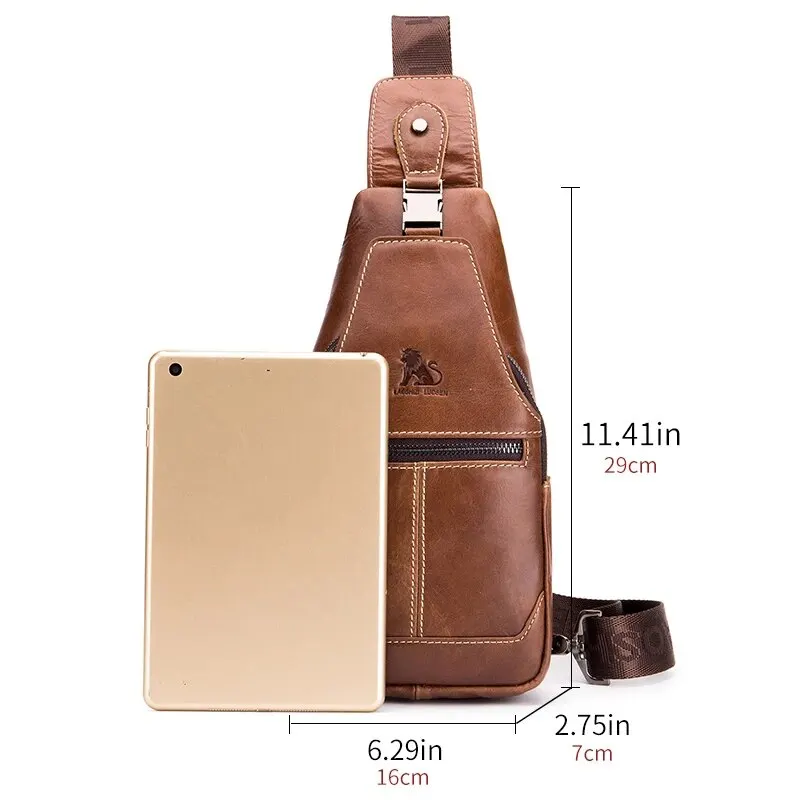
Navigating ethical claims requires a discerning eye, as marketing language doesn’t always align with actual practices. This checklist will help you identify truly ethical backpack options:
Transparency Indicators:
– Detailed information about material sources
– Named production facilities with location details
– Clear explanation of manufacturing processes
– Accessible information about working conditions
– Willingness to answer specific questions about sourcing
Certification Verification:
Legitimate ethical products typically carry recognized certifications appropriate to their materials. For leather, look for Leather Working Group certification; for textiles, GOTS or OekoTex; for overall company practices, B Corp certification. Verify these certifications through the certifying organization when possible.
Questions to Ask Brands:
– “Where specifically are your materials sourced from?”
– “How do you verify ethical practices throughout your supply chain?”
– “What happens to production waste and off-cuts?”
– “How are your workers compensated compared to industry standards?”
– “What is your product’s end-of-life plan?”
Recognizing Greenwashing Red Flags:
– Vague terms like “eco-friendly” without specific explanations
– Environmental claims without supporting evidence
– Focus on a single attribute while ignoring other impacts
– Misleading imagery suggesting natural origins for synthetic products
– Certification-like symbols that aren’t actually verified standards
Research Strategies:
– Check third-party sustainability ratings
– Read customer reviews specifically mentioning quality and longevity
– Investigate company sustainability reports for specific metrics
– Look for evidence of continuous improvement in practices
Brands offering luxury leather backpacks often lead in ethical practices, as their premium positioning allows for investment in responsible sourcing and production—though price alone doesn’t guarantee ethical standards.
14 Inch Leather Laptop Backpack, Brown Leather Backpack, Men's Leather Backpack, Vintage Leather Backpack
Price range: $177.28 through $199.12 Select options This product has multiple variants. The options may be chosen on the product pageCarry On Leather Backpack, Roll Top Leather Backpack
Price range: $77.76 through $96.48 Select options This product has multiple variants. The options may be chosen on the product page17 Inch Leather Laptop Backpack, Men's Leather Travel Backpack, Men's Leather Work Backpack
Price range: $106.28 through $143.88 Select options This product has multiple variants. The options may be chosen on the product pageBlack Leather Backpack, Small Leather Backpack, Women's Leather Backpack
Price range: $112.96 through $116.12 Select options This product has multiple variants. The options may be chosen on the product pageLuxury Leather Backpack, Small Leather Backpack, Women's Leather Backpack
Price range: $137.48 through $138.28 Select options This product has multiple variants. The options may be chosen on the product pageDesigner Women's Backpack, Luxury Leather Backpack
Holographic Geometric Laser Diamond PU Leather Women’s Fashion Backpack with Glow-in-the-Dark Design$112.20 Select options This product has multiple variants. The options may be chosen on the product page
9. Balancing Durability and Ethics: The Longevity Factor
The most sustainable product is often the one you don’t need to replace. This principle highlights the importance of durability in ethical product evaluation. A backpack that lasts ten years creates significantly less environmental impact than ten bags lasting one year each, even if the durable option requires more resources initially.
Product lifespan significantly affects environmental footprint calculations. The initial “cost” of resources used in production gets amortized over the entire useful life of the product. This lifecycle assessment approach reveals why high-quality materials often represent more sustainable choices despite higher upfront resource investments.
Repairability represents another crucial aspect of ethical product design. Products engineered with repair in mind—using standardized, replaceable components and construction methods that allow disassembly—extend useful life and reduce waste. Some manufacturers offer repair services or provide repair kits, demonstrating commitment to product longevity.
Different ethical materials offer varying durability profiles:
– Traditional leather: Can last decades with proper care and develops desirable patina
– Plant-based leathers: Generally less durable than animal leather but improving rapidly
– Recycled synthetics: Often highly durable but may not develop character with age
– Hybrid materials: Can combine durability benefits of multiple material types
Many black leather backpacks demonstrate this longevity principle through classic design that resists fashion obsolescence, combined with materials selected for durability—creating products that remain functional and desirable for many years.
10. Brands Leading the Way in Ethical Backpack Materials
Several pioneering brands demonstrate exceptional commitment to ethical material sourcing and production, setting standards for the industry while creating products that don’t compromise on quality or aesthetics.
Ethical Traditional Leather Leaders:
These brands utilize leather from certified humane sources, employ vegetable tanning or eco-friendly chrome-free methods, and ensure transparent supply chains. They typically work with tanneries certified by the Leather Working Group, prioritizing animal welfare and environmental responsibility throughout production.
Plant-Based Material Innovators:
Cutting-edge brands incorporating materials like Piñatex, Mylo, and AppleSkin demonstrate that performance and sustainability can coexist. These companies often collaborate directly with material developers to create custom applications optimized for backpacks, pushing the boundaries of what’s possible with plant-derived alternatives.
Recycled Content Champions:
These manufacturers transform waste materials—from ocean plastic to discarded textiles—into functional, attractive backpack materials. Their commitment to circular economy principles extends beyond materials to include packaging, shipping methods, and end-of-life considerations for their products.
The most impressive ethical brands typically share several characteristics:
– Complete transparency about material sources and production methods
– Comprehensive sustainability reporting with specific metrics
– Continuous improvement in environmental and social impacts
– Integration of sustainability throughout business operations, not just product materials
– Third-party verification of ethical claims
11. Is Vegan Always More Ethical? Understanding the Nuances
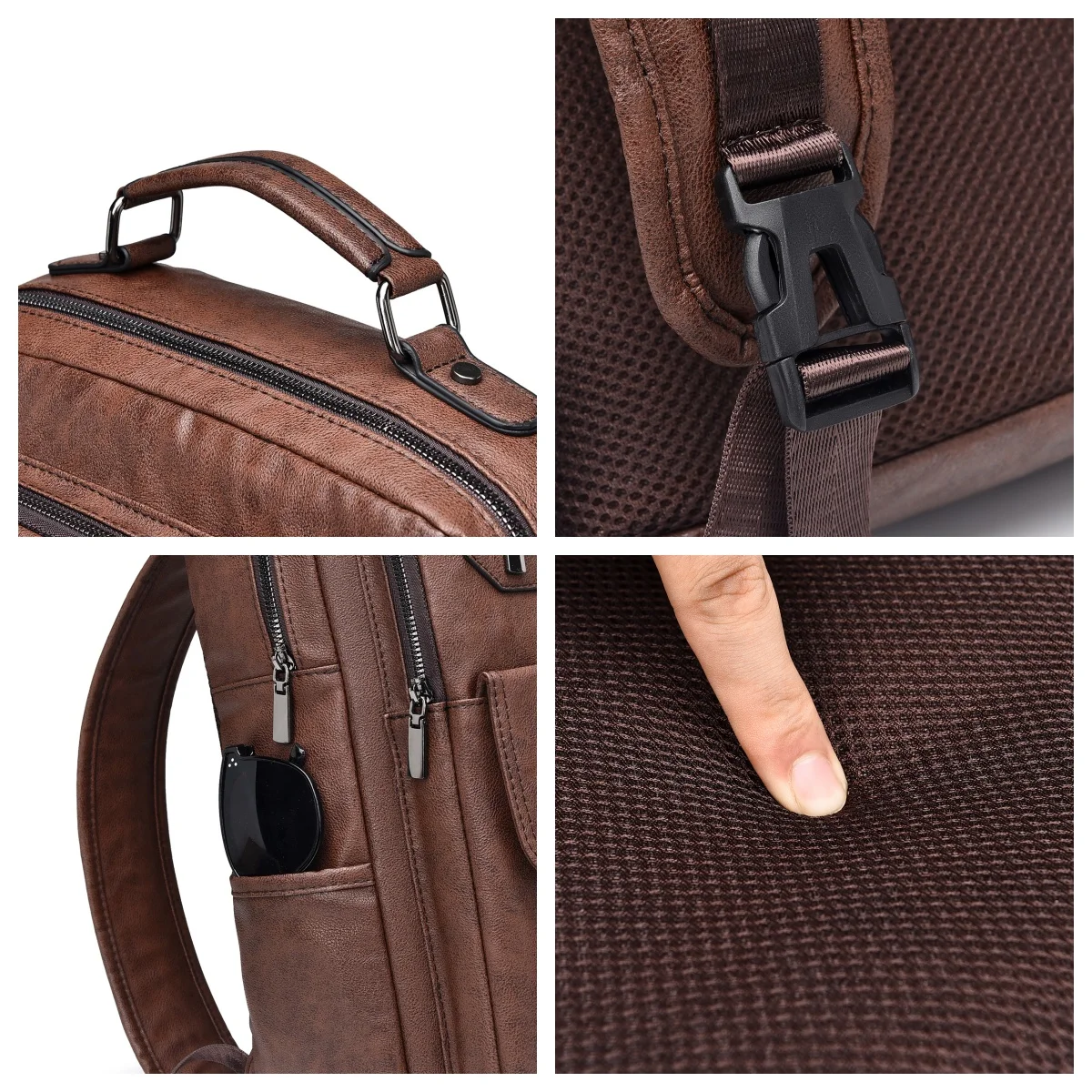
The assumption that vegan materials automatically represent more ethical choices oversimplifies a complex reality. While animal welfare concerns are eliminated with vegan options, other ethical considerations remain important.
Q: Do vegan materials always have a smaller environmental footprint?
A: Not necessarily. Some synthetic vegan leathers derive from petroleum products with significant environmental impacts, including fossil fuel extraction, energy-intensive manufacturing, and microplastic pollution. The environmental impact depends on specific material composition and production methods.
Q: How do durability comparisons affect ethical calculations?
A: Well-maintained traditional leather typically outlasts most synthetic alternatives, potentially resulting in less waste over time. However, newer plant-based alternatives continue improving in durability, narrowing this gap.
Q: What about biodegradability considerations?
A: Traditional leather biodegrades naturally, though tanning chemicals can complicate this process. Most synthetic vegan leathers do not biodegrade and may remain in landfills for centuries. Plant-based alternatives offer varying biodegradability profiles, with some fully compostable and others containing non-biodegradable components.
Q: Are working conditions better in vegan material production?
A: Working conditions vary widely across both animal and vegan material production. Ethical considerations should include labor practices regardless of material type, with transparent supply chains and fair labor certifications providing better assurance than broad material categories.
Understanding proper leather maintenance for commuters and similar care requirements for alternative materials helps extend product lifespan—a crucial ethical consideration regardless of material choice.
12. Your Questions Answered: FAQs About Ethical Backpack Materials
Are ethically sourced materials worth the higher price?
Ethically sourced materials typically command premium prices due to more careful production methods, fair labor practices, and higher-quality raw materials. This investment often translates to better durability, meaning the cost-per-use may actually be lower than cheaper alternatives that require frequent replacement. Additionally, ethical products minimize hidden costs passed to society through environmental damage and human exploitation.
How long do alternative leathers last compared to traditional leather?
While traditional leather can last decades with proper care, most current-generation alternative leathers typically offer 3-7 years of regular use before showing significant wear. Plant-based materials continue improving in durability with each development generation. The longevity gap narrows further when comparing alternatives to lower-quality genuine leather. Proper care significantly extends the lifespan of any material.
Can you repair plant-based leather products?
Many plant-based leathers can be repaired, though techniques differ from traditional leather repair. Small tears in materials like Piñatex or AppleSkin can be mended with specialized patches, while structural repairs depend on the specific material composition. Some manufacturers offer repair services specifically designed for their alternative materials. Always consult the manufacturer’s guidelines before attempting repairs.
What’s the difference between “bio-based” and “biodegradable”?
“Bio-based” means a material contains components derived from biological sources (plants, fungi, etc.) but doesn’t guarantee biodegradability. For example, a bio-based polyurethane might incorporate 20% plant oils but remain non-biodegradable. “Biodegradable” specifically refers to a material’s ability to break down naturally through biological processes. Some fully synthetic materials can be biodegradable, while some partially bio-based materials cannot.
How do I care for different ethical materials to maximize lifespan?
Each material requires specific care approaches. Traditional leather needs conditioning and appropriate waterproofing. Plant-based leathers typically require gentle cleaning with mild soap and water, avoiding harsh chemicals. Synthetic materials often benefit from regular cleaning to prevent dirt buildup. Many men’s leather backpacks come with specific care instructions designed for their particular materials—always follow manufacturer recommendations for best results.
13. The Future of Ethical Leather Alternatives
The landscape of ethical materials continues evolving rapidly, with several promising innovations poised to transform the backpack industry in coming years. Laboratory-grown collagen represents perhaps the most revolutionary development—creating genuine leather protein structures without animals through cellular agriculture techniques. These materials promise the performance and aesthetic of traditional leather without ethical concerns regarding animal welfare.
Scaling remains the primary challenge for many innovative materials. While small production runs demonstrate technical feasibility, achieving commercial volumes at competitive prices requires significant investment in manufacturing infrastructure. Several plant-based leather companies have secured major funding to build dedicated production facilities, suggesting wider availability in the near future.
Biodegradability represents another frontier in material development. Next-generation alternatives aim to combine durability during use with complete biodegradability at end-of-life—eliminating the waste problems associated with both traditional and synthetic materials. These materials incorporate programmed decomposition triggered by specific composting conditions.
Consumer demand continues driving innovation, with market research showing willingness to pay premiums for truly sustainable options. This economic incentive accelerates research and development while encouraging traditional manufacturers to improve their practices.
The vision of a truly circular material economy in accessories seems increasingly achievable. Materials designed from their inception for eventual disassembly and recycling or composting could eliminate the concept of waste entirely. Several backpack brands have already launched take-back programs where old products become raw materials for new ones, closing the production loop.
As these materials continue developing, Summit Carry remains committed to offering products that balance ethical sourcing, exceptional durability, and timeless design—recognizing that true sustainability requires both responsible production and products built to last.

